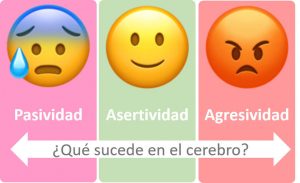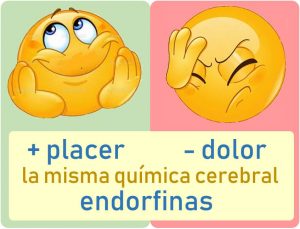We propose a way to improve self-esteem and mood. The knowledge of behavioral neuroscience that provides NeuroQuotient® helps us to do it. Although the article is aimed at psychologists and coaches, we can all take advantage of it. Self-esteem and mood are very low in depression. The strategy we propose is based on strengthening neuro behaviors opposed to those most characteristic of this disorder.
Improving self-esteem and mood is a fairly frequent need, of which we are not always aware
When working with people in their development, we find clients with self-esteem and mood that can be improved.
The clinical psychologists will likely say that most of the cases they treat present this problem.
In the case of coaching the frequency is much lower. It is logical. However, it is important to keep in mind that it is difficult to improve in leadership and in achieving tangible goals, if the person does not have a certain level of self-leadership. And insufficient self-leadership on many occasions is equivalent to a low self-esteem.
t is true that when we achieve results, we increase self-esteem and mood. But, at the same time, the results are almost impossible without a minimum of these ingredients.
It is important, then, that we identify these cases. So is having a strategy to address them. NeuroQuotient® makes it easier for us to work both ways, identify cases and design strategies based on neuroscience.
When is it necessary to improve self-esteem and mood?
Low self-esteem and low mood are phenomena that do not necessarily go together and, fortunately, both can have a limited duration over time. Having a low mood can be temporary. Low self-esteem is usually more durable and negatively influences mood.
However, we will focus its improvement in the same way. As we go into the post we will see why.
We will propose a strategy based on the understanding of the neuroscience of behavior provided by NeuroQuotient®, the neuro tool.
Before going into it, it is important that we remember what the neuro tool is and how it was created.
NeuroQuotient® tells us about the brain bases of behavior: neuro behaviors. To identify these brain bases – the brain systems that most significantly influence behavior – we wonder which ones were involved in the most frequent psychological disorders.
In depression, low self-esteem and low mood come together
It is easy to guess that the psychological disorder where low self-esteem and low mood come together is depression. In fact, depression is a mood disorder. When we are depressed we don’t feel like anything and our energy is very low. It is almost impossible to take action to achieve something valuable and, consequently, our self-esteem is disappearing.
But, one moment, please!
Improvable self-esteem and mood do not necessarily imply depression, at all. However, understanding this disorder will help us to build a valuable strategy to improve.
One of the dimensions of the neuro tool indicates the level of self-esteem and mood. When self-esteem and mood are good, we can say that we are very far from depression.
So, if we think in terms of neuroscience, when considering a strategy on how to increase self-esteem and mood, we will have to do something that keeps us away from depression.
As a first idea, we could to propose to look for ways to increase serotonin. It is the most common pharmacological approach, right?
However, in another post we saw the paradox of serotonin: It turns out that the genetic profile of people with a greater tendency to depression is characterized by having serotonin reup-takers that leave more serotonin free!
Increasing serotonin is not the solution
On the other hand, serotonin is one of the main inhibitory neurotransmitters. By increasing it, we will be able to feel calm and relaxed, but we will hardly be able to focus on achieving results that help us increase self-esteem and modo.
But, there is another way we can address this improvement:
It is one of the development strategies derived from NeuroQuotient. To create them, we start from Einstein’s idea that ‘the problems must be solved at a level different from the one they were created.
We believe that the improvement of self-esteem and mood has to go the way of dopamine. Much better than serotonin. These two neurotransmitters are considered to have an opposite role. (Bureau, Y-Lan; Dayan, Peter; Opponency Revisited: Competition and Cooperation Between Dopamine and Serotonin)
The symptoms of depression themselves show us a more efficient way of improvement
We will understand it easier taking into account two symptoms and / or neuro behaviors characteristic of depression: anhedonia and rumination.
Anhedonia is one of the symptoms of major depression. It is the inability to experience pleasure and loss of interest or satisfaction in almost all activities. It is considered a lack of response to usually pleasant stimuli.
Rumination is another of the neuro behaviors present in depression. It consists of getting stuck in loops of negative thinking.
With a negative focus on oneself, often self-blame. ‘How bad I have done it!’ . Thinking on the past problem and not the solution. An unfortunate way to undermine the mood and self-esteem. It also happens that brains with a greater tendency to ruminate have a higher risk of depression.
These two symptoms give us the clue of how to focus self-esteem and mood improvement. Create new neuro behaviors, new brain connections (to be strengthened with practice) to:
- Wake up the reward system (motivation) by focusing on positive. Mainly in the present. In this way we start up dopamine and avoid anhedonia.
- Jump from one thought to another (also with a positive approach) to break the tendency to ruminate.
This is what creative people with high positive imagination. Those who live life and feel and transmit us enthusiasm
Curiously, these are the most specific neurobehaviors of one of the efficient dimensions (those that provide good results) identified in NeuroQuotient®.
The human brain is not able to distinguish between what it perceives from what it remembers or imagines. In this way, if we are able to direct our attention (inside and / or outside) in a positive way, we can start up the dopamine of the reward system.
On the other hand, creative people with great imagination are able to jump from one positive thought to another one. In fact, this is one of the bases of creativity. Thus, they awaken their reward system. And when they fall into a negative thought, they are able to turn the page very quickly.
From these ideas we can create ways to put it in practice
Normally, to improve self-esteem and mood, it is suggested focusing on past successes and projecting them to the present and the future. Not bad. On the contrary, it is very good for cases in which self-esteem and mood are not very ‘down’. However, when the tendency to ruminate is high, the effects of the approach to success usually disappear soon.
A more effective way is to join the roads we saw before:
- positive focus in the present, to awake the reward system and avoid the risk of anhedonia,
- learn to jump from one idea to another to break the rumination.
From there we can imagine any simple tactic to put practice with customers. For example. Create a game from what they like best and capture it on a board, a kind of ‘goose game’ (without wells or punishments), and, with a dice, to jump from one situation to another. Arriving at each square is about ‘living’ the pleasant situation.
Finally, remember, that theoretical understanding does not help much. Action, practice (even in simulated mode) is the only way to strengthen the new brain connections. At the same time, stop using the old ones is the only way to weaken them. This is what Hebb’s rule says us.



